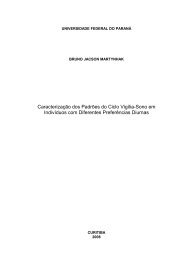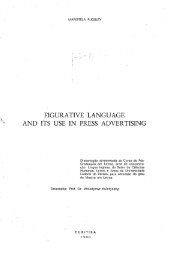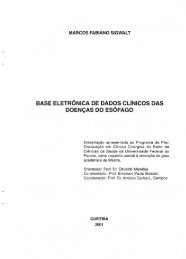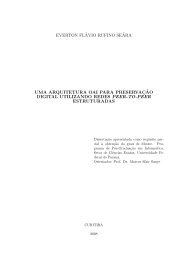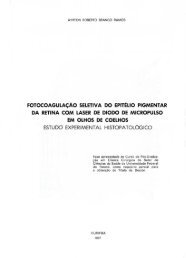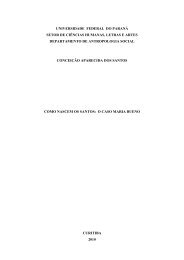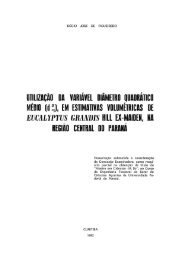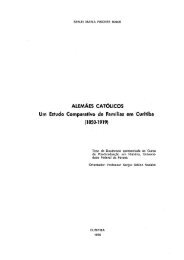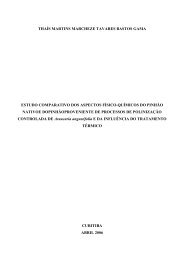towards an analysis of errors made by university students ... - DSpace
towards an analysis of errors made by university students ... - DSpace
towards an analysis of errors made by university students ... - DSpace
Create successful ePaper yourself
Turn your PDF publications into a flip-book with our unique Google optimized e-Paper software.
eing that 'qu<strong>an</strong>tum' is a more, inclusive term, which c<strong>an</strong> be<br />
applied to other things as well<br />
as light - for inst<strong>an</strong>ce - to<br />
the vibration <strong>of</strong> whole atoms <strong>an</strong>d molecules.<br />
T8P - Text number 8 - Physics<br />
THE QUANTUM THEORY OF RADIATION (Part two)<br />
The qu<strong>an</strong>tum <strong>of</strong> radi<strong>an</strong>t energy differs from<br />
the<br />
qu<strong>an</strong>tum <strong>of</strong> electricity, the electron, in a very import<strong>an</strong>t way.<br />
The amount <strong>of</strong> charge is the same on all electrons: there<br />
is<br />
but one unit. The magnitude <strong>of</strong> this unit <strong>of</strong> radi<strong>an</strong>t<br />
energy,<br />
however, is different for every different wave-length <strong>of</strong><br />
radiation. It is, in fact, proportional to the frequency, so<br />
that the qu<strong>an</strong>tum <strong>of</strong> energy <strong>of</strong> extreme visible red radiation is<br />
only half that <strong>of</strong> the extreme visible violet radiation,<br />
which,<br />
as we have said before, hîs double the frequency. The qu<strong>an</strong>tum<br />
<strong>of</strong> <strong>an</strong> X-radiation<br />
is very much greater th<strong>an</strong> the qu<strong>an</strong>tum <strong>of</strong> <strong>an</strong>y<br />
visible<br />
radiation.<br />
The qu<strong>an</strong>tum <strong>of</strong> energy corresponding<br />
to a given<br />
species <strong>of</strong> radiation is found, then, <strong>by</strong> multiplying the frequency<br />
<strong>by</strong> a certain fixed number, which is called Pl<strong>an</strong>ck's universal<br />
const<strong>an</strong>t, <strong>an</strong>d always indicated <strong>by</strong> Ih. Pl<strong>an</strong>ck's const<strong>an</strong>t enters<br />
into every aspect <strong>of</strong> modern atomic physics <strong>an</strong>d its<br />
numerical<br />
value has been found <strong>by</strong> at least ten different methods,<br />
involving<br />
such things as X-ray properties, the distribution<br />
<strong>of</strong> energy in<br />
black-body radiation, the frequencies <strong>of</strong> spectral lines, <strong>an</strong>d so<br />
on. All the methods give values agreeing to within a few parts<br />
in ten<br />
thous<strong>an</strong>d.<br />
Light, then, or radiation<br />
in general, has a packet



